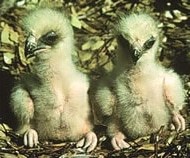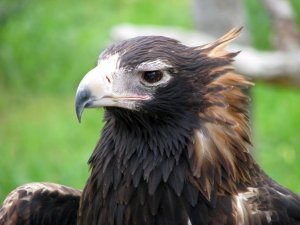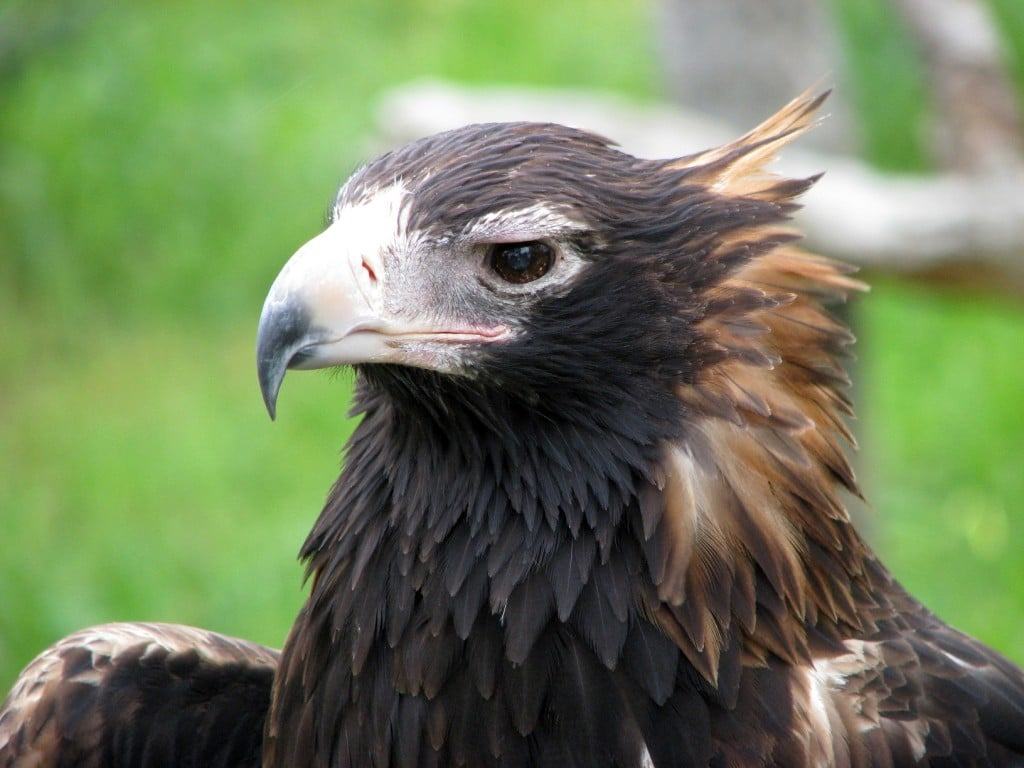Skip to content

The wedge tail eagle (Aquila Audax) is the largest bird of prey in Australia.
Although they are found across the continent they favour lightly timbered and open country.
The wedge tail is a common sight in Deep Creek with healthy numbers throughout the Park.
Females are bigger than males with wingspans typically between 180-230 cm.
Some historical records have even shown wingspans of just under 3 metres.

Nests are usually built in the fork of a tree or sometimes on cliff edges.
Typically they are between 2 to 5 metres wide with similar depths.
Usually two eggs are laid which take about 45 days to hatch.
During that period the female broods while the male hunts for food.
Once the chick is about 1 month old both parents hunt for food.
Offspring can be dependent for food for up to six months after hatching
but leave the nest once the next breeding season commences.
Juveniles are mid brown in colour but darken with age to a dark brown to black colour.

Wedge tail eagles can often fly at heights of up to 6000ft (2000 metres)
and have vision which extends in to ultraviolet wavelengths.
Native prey typically includes wallabies, possums, small kangaroos and bandicoots.
However, with the introduction of European animals their prey now predominantly
consists of rabbits and to a lesser extent hares, foxes and feral cats.
Under ideal conditions a wedge tail eagle can lift approximately half its body weight.
Carrion, especially road kill, forms a major part of the eagle’s diet.
Their superb eye sight can spot other scavengers such as crows
feeding on a carcass from a great distance.

The introduction of the calicivirus has resulted in a decline of rabbits in
many parts of Australia. As it is the principle food source for eagles it remains
to be seen if this will have an adverse impact on eagle population numbers.
Their home range can vary from just 9m2 to over 100m2. Occasionally, wedge tail eagles
are known to defend their territory against hang gliders and paragliders as shown in this video






